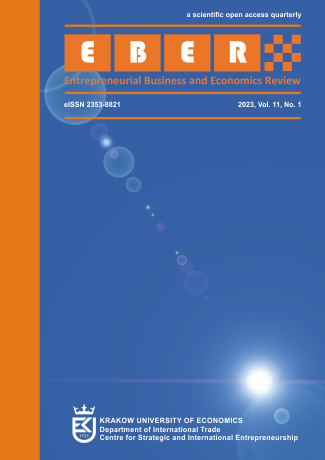The effects of monetary policy response to the Covid-19 crisis on dynamic connectedness across financial markets in Central and Eastern Europe

Abstract
Objective: This study investigates the effects of monetary policy interventions in Central and Eastern European (CEE) economies on shifts in financial market linkages during the Covid-19-induced crisis. We explore the market reaction to both standard and non-standard (e.g., quantitative easing) monetary policy announcements by central banks in Czechia, Hungary, Poland, and Romania, and analyse the way they affected sovereign bond and stock market linkages. The analysis is further extended to include international spill-over effects.
Research Design & Methods: We first quantify a set of time-varying asset correlations using asymmetric generalised DCC-GARCH models and daily data on financial asset returns. Going beyond the domestic stock-bond interdependencies, we explore cross-border connectedness between CEE economies, Germany, and the US. Next, we investigate the effects of detailed central bank announcements, as they unfolded during the Covid-19 crisis.
Findings: We find that, by and large, the CEE central bank interventions conducted in 2020 alleviated domestic and cross-border pressures in financial market linkages triggered by the global risk shock, such as contagion and flight-to-safety effects. However, monetary policies had largest impact at the height of the crisis when central banks in the region introduced substantial interest-rate cuts and unconventional measures, which were used by those banks for the first time or on such a wide scale.
Implications & Recommendations: Our results imply that monetary authorities may partly mitigate the transmission of global shocks to domestic financial markets, even when it comes to small open economies. However, the effects of monetary policies proved strongest at the onset of the crisis and seem to have been related to unconventional policy tools and aggressive interest rate cuts.
Contribution & Value Added: We examinee linkages across the two largest asset classes, sovereign bonds and equities, both within CEE economies and between each of them and Germany and the US (traditionally perceived as safe havens), while controlling for potential structural breaks, global risk measures, and Covid-19-related indicators, such as the number of Covid-19 cases and the government-response stringency indices. Event studies conducted in the article are based on a comprehensive dataset on policy interventions launched during 2020.
Keywords
COVID-19 pandemic, financial markets, financial linkages, monetary policy, quantitative easing, Central and Eastern Europe
Author Biography
Wojciech Grabowski
PhD in economics (2011); Associate Professor (2020) at the Department of Econometric Models and Forecasts, University of Lodz (Poland). His research interests concentrate mainly on econometric methods of analysis of non-stationary and high-frequency data.
Jakub Janus
Assistant professor in the Department of Macroeconomics at the Cracow University of Economics, main interests: macroeconomics, monetary policy, international economics, macroeconometrics.
Ewa Stawasz-Grabowska
PhD in finance (2017); Assistant Professor at the Department of International Finance and Investment, University of Lodz (Poland). Her research interests concentrate mainly on monetary and financial policy in the euro area.
